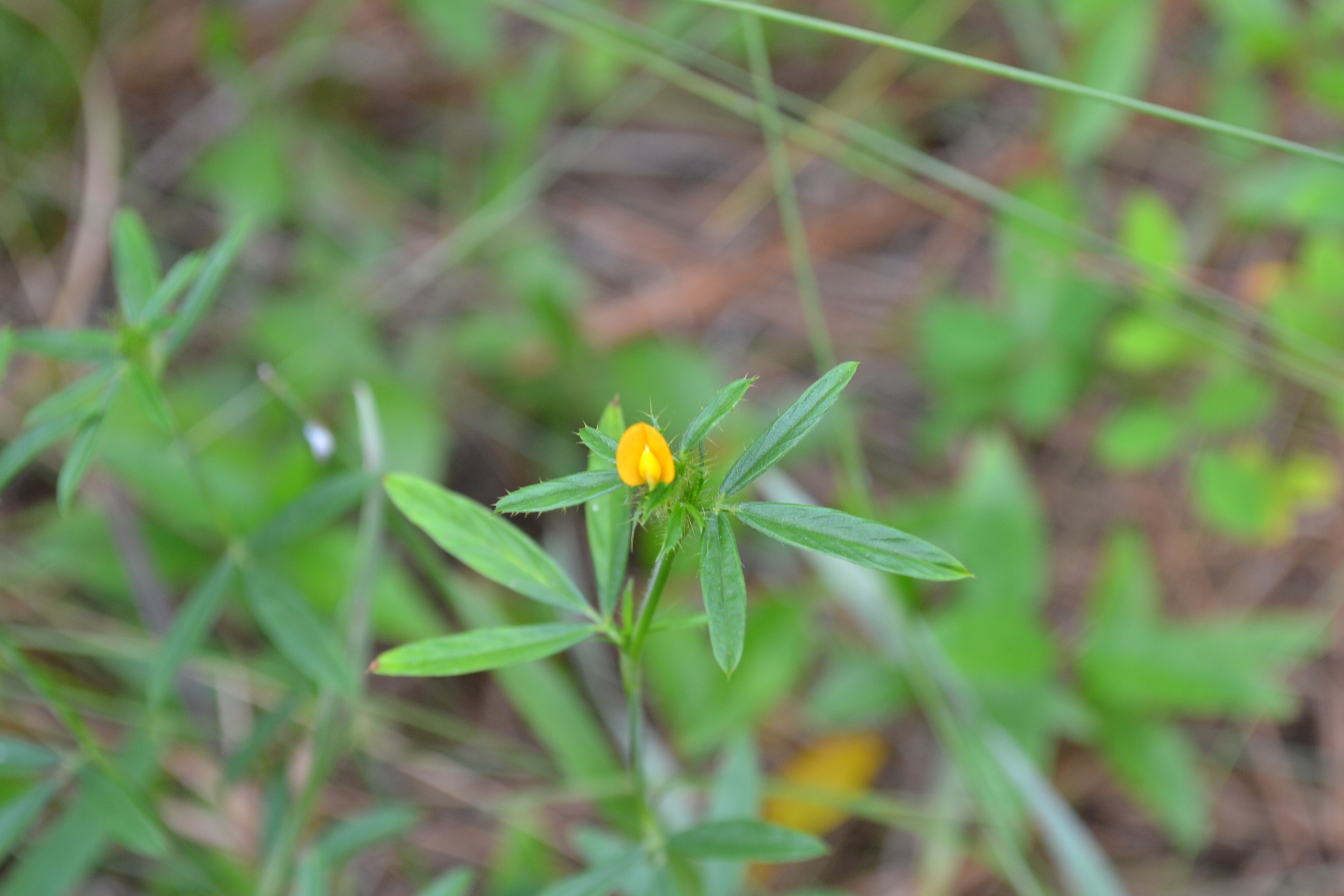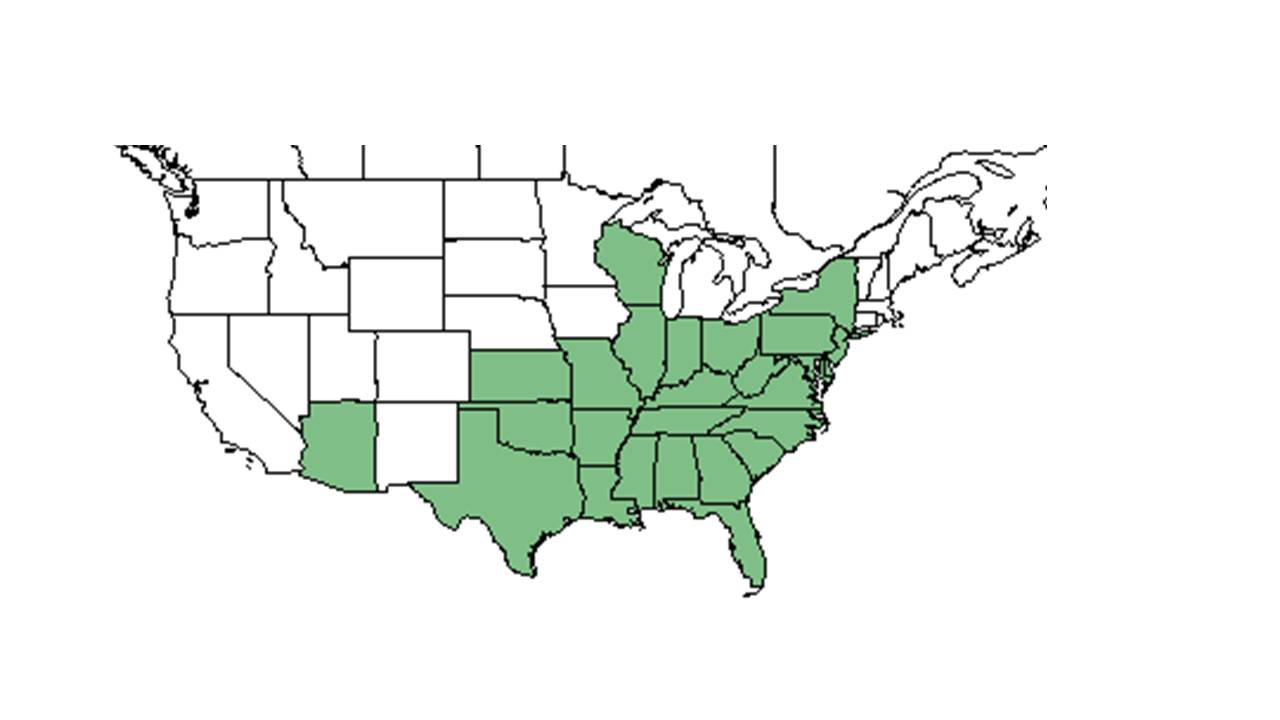Stylosanthes biflora
| Stylosanthes biflora | |
|---|---|

| |
| Photo taken by Michelle M. Smith | |
| Scientific classification | |
| Kingdom: | Plantae |
| Division: | Magnoliophyta – Flowering plants |
| Class: | Magnoliopsida – Dicotyledons |
| Order: | Fabales |
| Family: | Fabaceae ⁄ Leguminosae |
| Genus: | Stylosanthes |
| Species: | S. biflora |
| Binomial name | |
| Stylosanthes biflora (L.) Britton, Sterns & Poggenb. | |

| |
| Natural range of Stylosanthes biflora from USDA NRCS Plants Database. | |
Contents
Description
Common name: sidebeak pencilflower
Distribution
Ecology
It is a legume (Hiers et al 2000).
Habitat
It can live in xeric areas (Carter et al 2004). It can live in disturbed areas (Kirkman et al 2004). Baker County, Georiga at Jones Ecological Research Center with native groundcover managed with frequent fire (Birkhead et al 2005; Simkin et al 2001). It is common in longleaf pine communities (Carter et al 2004). Hainds and his team found that S. biflora occurred in 92.3% of the plots (Hainds et al 1999). Longleaf pine flatwoods that are mesic, fire-maintained savannas or sparse woodlands with nutrient-poor soils (Brewer and Cralle 2003). Longleaf pine stands that originated from seed in Rapides Parish Louisiana that have fine sandy loam soils (Haywood et al 1998). Buettner Xeric Limestone Prairies in Monroe County, Illinois that include outcrops along streams and river where a prescribed burn was conducted in the nearby woody area in 2010 (McClain and Ebinger 2014).
Phenology
It has a mid-summer flowering peak (Hiers et al 2000). Following a lightning-season burn, it continues to reproduce through late summer and fall (Hiers et al 2000).
Seed dispersal
It is dispersed by gravity (Kirkman et al 2004).
Seed bank and germination
Fire ecology
It seems to thrive under frequent burning around the summertime. Lightning-season burns seem to significantly increase flowering, but only after a dramatic delay (Hiers et al 2000). Density of S. biflora was greater after frequent late dormant-season fires (Sparks et al 1998). S. biflora was found only in annual winter and annual summer long-term (20 years) burned loblolly pine plots, and even then, only rarely (Lewis and Harshbarger 1976).
Pollination
Use by animals
Gopher tortoises (Gopherus polyphemus) graze on Stlosanthes bioflora (Birkhead et al 2005).
Diseases and parasites
Conservation and Management
Cultivation and restoration
Photo Gallery
References and notes
Kirkman, L. K., K. L. Coffey, et al. (2004). "Ground cover recovery patterns and life-history traits: implications for restoration obstacles and opportunities in a species-rich savanna." Journal of Ecology 92: 409-421.
Birkhead, R. D., C. Guyer, et al. (2005). "Patterns of folivory and seed ingestion by gopher tortoises (Gopherus polyphemus) in a southeastern pine savanna." American Midland Naturalist 154: 143-151.
Hiers, J. K., R. Wyatt, et al. (2000). "The effects of fire regime on legume reproduction in longleaf pine savannas: is a season selective?" Oecologia 125: 521-530.
Sparks, J. C., R. E. Masters, et al. (1998). "Effects of late growing-season and late dormant-season prescribed fire on herbaceous vegetation in restored pine-grassland communities." Journal of Vegetation Science 9: 133-142.
Lewis, C. E. and T. J. Harshbarger (1976). "Shrub and herbaceous vegetation after 20 years of prescribed burning in the South Carolina coastal plain." Journal of Range Management 29: 13-18.
Simkin, S., W. Michener, et al. (2001). "Plant Response Following Soil Disturbance in a Longleaf Pine Ecosystem." Journal of the Torrey Botanical Society 128(3): 208-218.
Carter, R. E., M. D. MacKenzie, et al. (2004). "Species composition of fire disturbed ecological land units in the Southern Loam Hills of south Alabama." Southeastern Naturalist 3: 297-308.
Hainds, M. J., R. J. Mitchell, et al. (1999). "Distribution of native legumes (Leguminoseae) in frequently burned longleaf pine (Pinaceae)-wiregrass (Poaceae) ecosystems." American Journal of Botany 86: 1606-1614.
Brewer, J. S. and S. P. Cralle (2003). "Phosphorus addition reduces invasion of a longleaf pine savanna (southeastern USA) by a non-indigenous grass (Imperata cylindrica)." Plant Ecology 167: 237-245.
Haywood, J. D., A. Marti, et al. (1998). Seasonal biennial burning and woody plant control influence native vegetation in loblolly pine stands. Research Paper SRS-14. Asheville, NC, USDA Forest Service.
Hiers, J. K., R. Wyatt, et al. (2000). "The effects of fire regime on legume reproduction in longleaf pine savannas: is a season selective?" Oecologia 125: 521-530.
McClain, W. E. and J. E. Ebinger (2014). "Vascular Flora of Buettner Xeric Limestone Prairies, Monroe County, Illinois." Southern Appalachian Botanical Society.